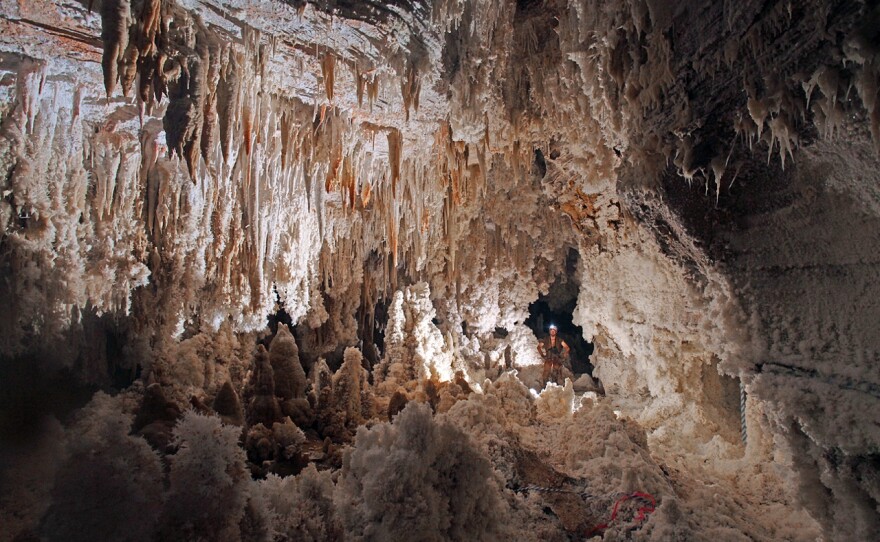The Grand Canyon is famous for its complex geology that displays more than a billion years of Earth’s history. Now, park managers are just beginning to explore what’s beneath the visible surface—an extensive maze of caves.
The caverns are extremely fragile and protected by federal law, which limits public access. But a few researchers are allowed to study them. By a slow, tedious process, they’ve so far mapped about a hundred miles of passageways. But, they say this represents only a small fraction of the vast cave network.
Park rangers, along with volunteer spelunkers, are discovering an amazing underground world. They’ve found previously unidentified cave-adapted invertebrates, and are studying the remains of a giant ground sloth and other Ice Age fauna.
The caves also hold a rich human history, including split-twig figurines left nearly 5,000 years ago. The makers of the artifacts were likely skilled climbers who may have used rope ladders to reach cave entrances in the limestone cliffs hundreds of feet below the canyon rim.
Researchers are also performing dye tests to examine how water seeps from the surface down into aquifers through what’s called karst topography. The dye tracing can reveal how fast the water moves, and where it’s emerging as springs.
Results so far show water traveling at a surprisingly fast pace—through thousands of feet of rock and over several miles in only days—and resurfacing at unexpected places.
Scientists hope to understand how chemicals and other pollutants, and groundwater pumping, could affect the health of these complicated systems—and shine a light on subterranean ecosystems.




































